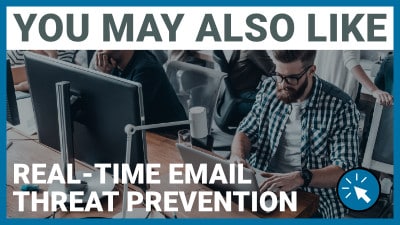
What Is A 'Human Firewall' & How Does It Protect My Business?
#4In the ever-evolving landscape of cybersecurity, organisations must continually seek innovative ways to protect their data. Among the most critical cyber security strategies is the human firewall. If you’ve ever found yourself wondering, “What is a human firewall,” you’ve come to the right place. We’ll dive into what a human firewall is, why it’s essential for your business, and provide actionable recommendations on how to build your business a strong one.
What is a human firewall?
In the Hardware section of Cyber Summer, we discussed the vital role that your firewall has in protecting your business. Firewalls essentially monitor traffic and make decisions about what to allow, and what not to allow, into your network – and so do your users. Every single click has the potential to unleash a cyber attack. So, alongside the appropriate security software, it is important to ensure the people within your business are able to do their bit to keep your business safe.
The concept of a human firewall is that to take the same approach with your team members as you would with your security software. Keep them fully up-to-date with the latest threats, how they work, and how to spot them so you can bolster your business security.
Now that we’ve answered the question, “What is a human firewall,” let’s take a look at why you need a human firewall and how to build one.
How can a human firewall help my business?
“I’ve already got an expensive firewall and strong antivirus software on every device. Isn’t that enough?”
Great! You’ve taken the first and best step towards being more cyber secure as an organisation. But, you can’t rely on a human firewall alone. A more well-rounded cyber security approach will protect you against the majority of hacking attempts.
Let’s review some of the most common cyber threats impacting businesses today and how a strong human firewall can protect you against them.
#1 Phishing
Phishing is an attack technique where malicious actors send deceptive emails or other forms of communication with the aim of deceiving employees into divulging sensitive information, such as passwords or financial data. Despite being a well-known method of attack, phishing is progressively growing more difficult to detect.
According to ICO data, 45% of breaches in 2019 were from phishing attacks, where the human, rather than the device, is the focus of the attack.
#2 Pretexting
Pretexting is another method employed to illicitly acquire sensitive information. In this type of attack, cybercriminals attempt to deceive victims by requesting personal information to verify their identity. Attackers may even assume the identity of the victim’s manager or HR personnel to create a sense of urgency and pressure for quick, thoughtless responses.
#3 Baiting
Baiting is similar to pretexting, but in this scenario, the attacker entices the victim with a reward. The bait, however, is only the initial step in this cyberattack, serving as a means for the attacker to introduce malware into the victim’s system, eventually leading to the theft of sensitive information.
#4 Quid pro quo
Quid pro quo attacks deceive individuals into divulging information by proposing to exchange something in return for a requested action. Similar to baiting, this type of attack serves as a gateway for attackers to deploy ransomware or orchestrate a more sophisticated social engineering attack.
#5 Tailgating
The fact is that if your users are in the dark about what common cyber security threats look like, then your business is vulnerable to some of the most common forms of cyber-attack. To protect your business, it’s crucial to ask your users “What is a human firewall” to gauge their understanding and build awareness.
How do I build a human firewall?
At the most basic level, a human firewall is just a catchy phrase for a structured and ongoing education of employees about the cyber security threat environment.
This can be done yourself internally, by bringing external experts into the company, or through a dedicated service such as our own Security Awareness Training platform.
We can help:
Use Security Awareness Training alongside Total Email Protection for a complete phishing protection solution.
However you choose to manage your cyber security, the most important thing is that you continue to maintain it. Just like your hardware firewall, if you don’t manage your human firewall properly and instead let the updates slip, it quickly becomes less effective.
The InfoSec Institute identifies 7 elements required for a successful human firewall approach:
1. Make it easy
Don’t overwhelm people with too much information at once. Ask staff members, “What is a human firewall” and let them answer. You can make adoption easier by reviewing best practices one at a time.
2. Keep education ongoing
Ad hoc or a few times a year is simply not enough for such an evolving threat landscape. Human firewall education should be structured and continuous, including updates as new threats arise.
3. Give incentives
Encouraging participation in the human firewall can be as simple as giving each member special recognition for doing things like catching phishing emails. Studies indicate that public attribution and validation are strong motivating factors in participation.
4. Include all departments
People shouldn’t feel intimidated or that they aren’t tech-savvy enough to be a part of the human firewall. In fact, it’s essential everyone is encouraged to join. Attacks can be targeted at anyone, from your entry-level positions to your highest-level executive.
5. Keep it human
Those who participate should do their best to help others with cybersecurity concerns, thereby helping change culture and behaviour. Avoid treating people like cogs in a machine.
6. Monitor vigilance
Use phishing simulation programs (such as the one included in our Security Awareness Training offering) to send phony emails to unsuspecting employees, and see if any links are clicked. This provides an excellent benchmark for how your human firewall is performing.
7. Always be evolving
The human firewall should be on constant alert for new threats, reporting any suspicious activity. As attack tactics change, your team must be prepared to incorporate new best practices into the business.
We can help:
Why not build our free TechBytes and Techsplained videos into an ongoing training plan?
To Summarise
Having now read this blog, you should be well equipped to answer questions such as what is a human firewall and how can a human firewall approach help protect my business? You can now rest assured that your business is a step closer to being secure. If you need any support in the areas of cyber security – you know who to call. Don’t wait before it’s too late – book in for a free consultation!
I now understand…
- What a human firewall is.
- How a human firewall approach can help protect my business.
Request for your
Cyber Summmer FREEBIES
Contact Us
Testimonials
Alan Wooler, ProAct
Stuart who attended is a spot on guy who knows his stuff and is very polite.
The Willows School
Jordan always goes above and beyond no matter how crazy an idea we have or how quickly something needs doing.
LFP Financial Planning
Excellent speedy service! Thank you for your help.



